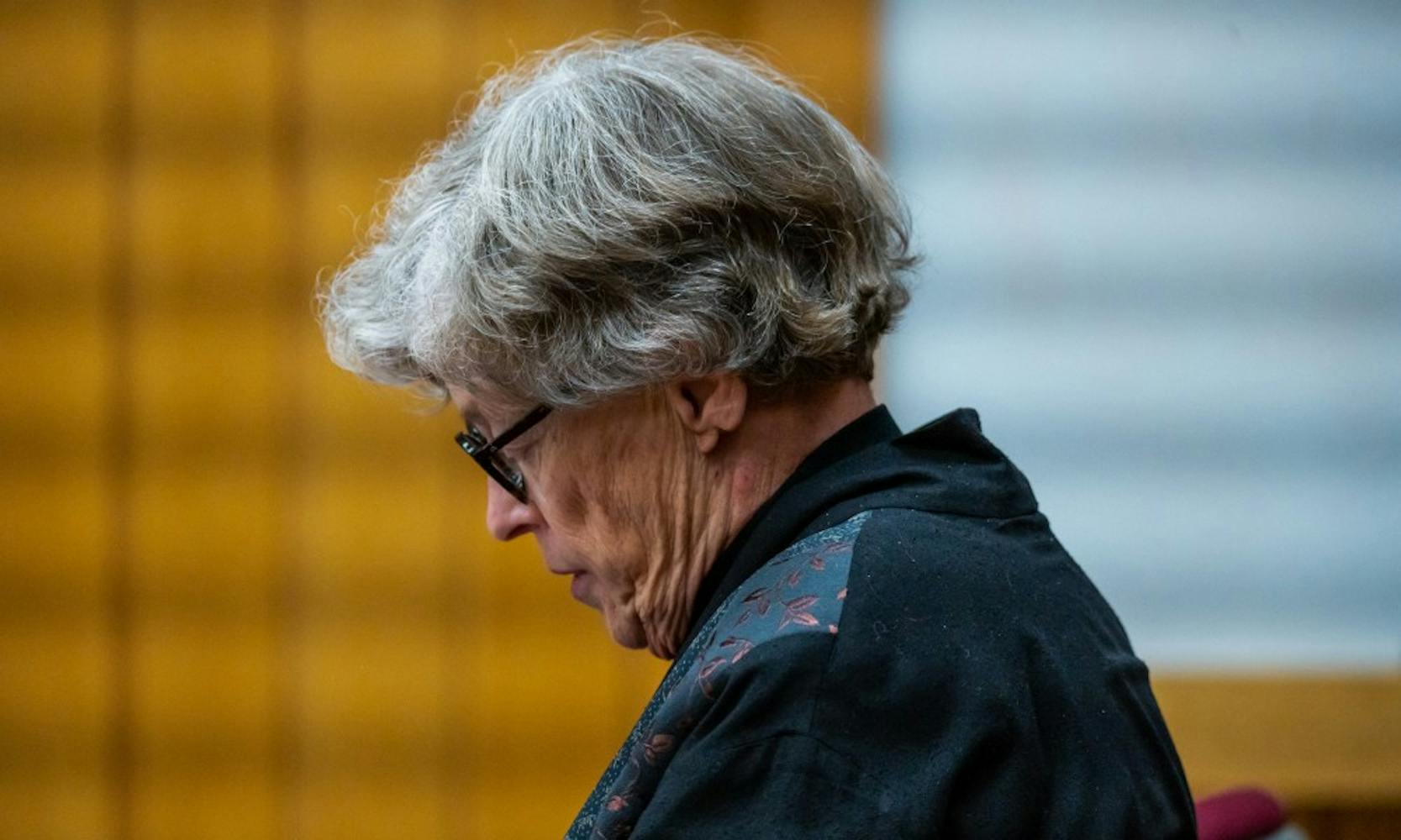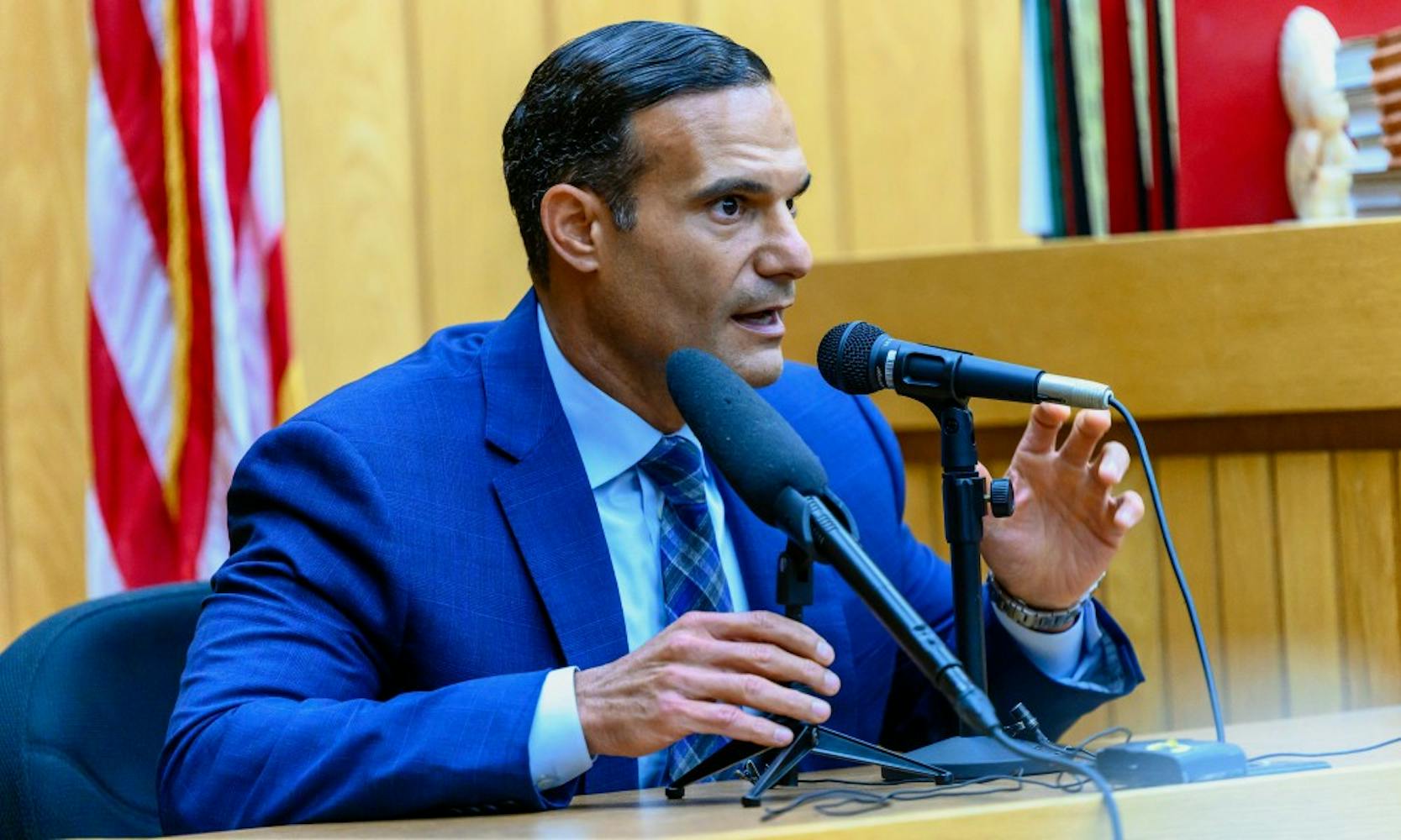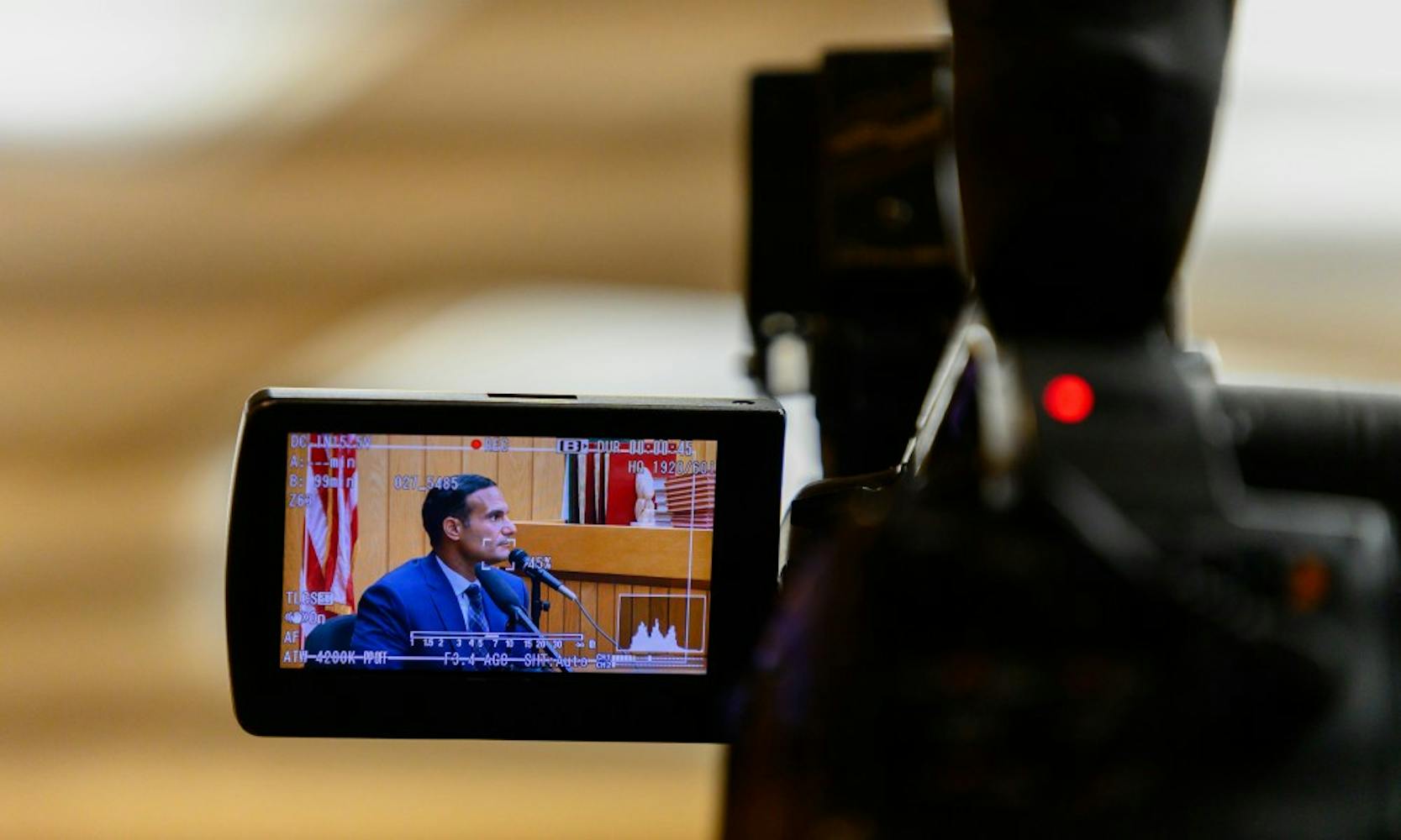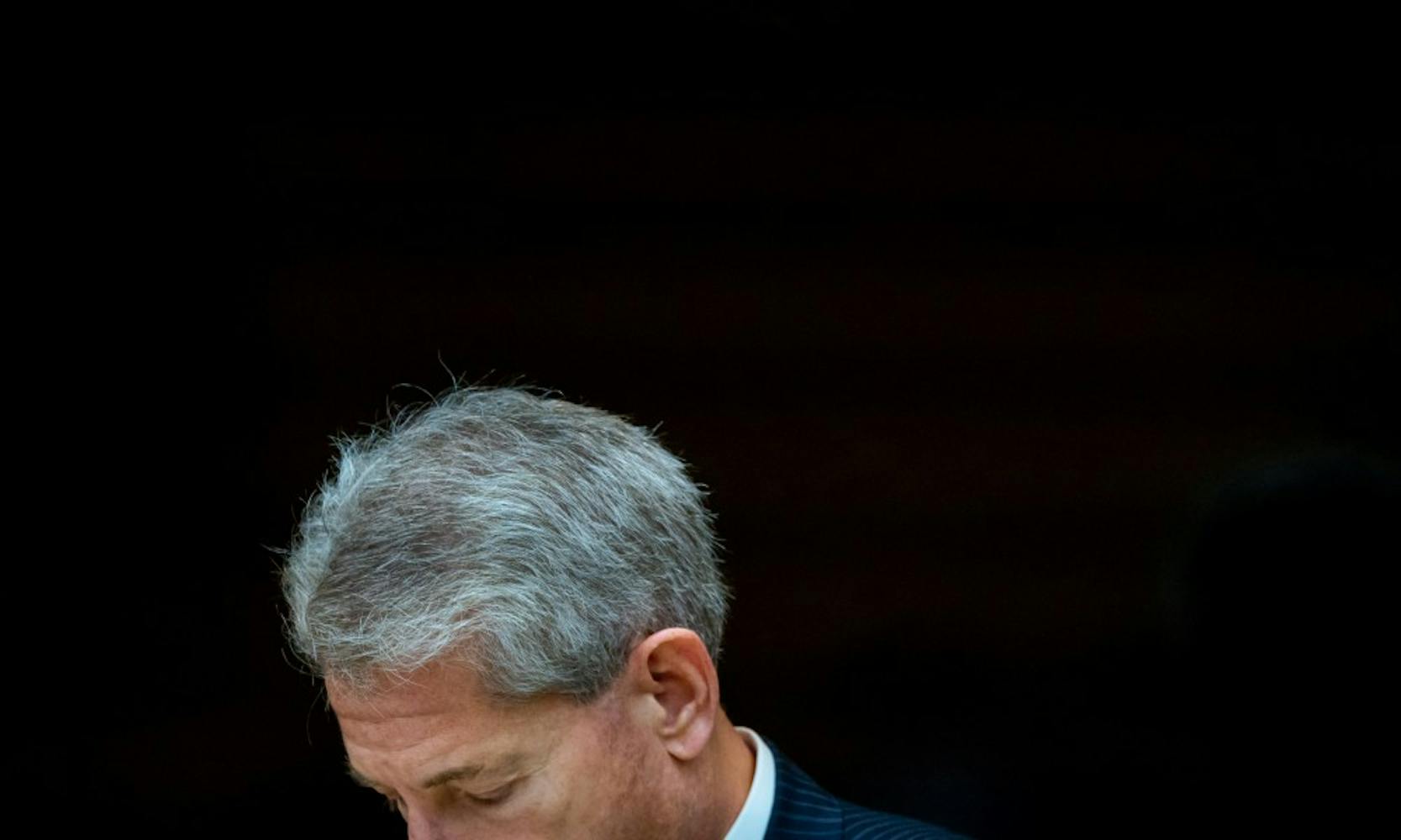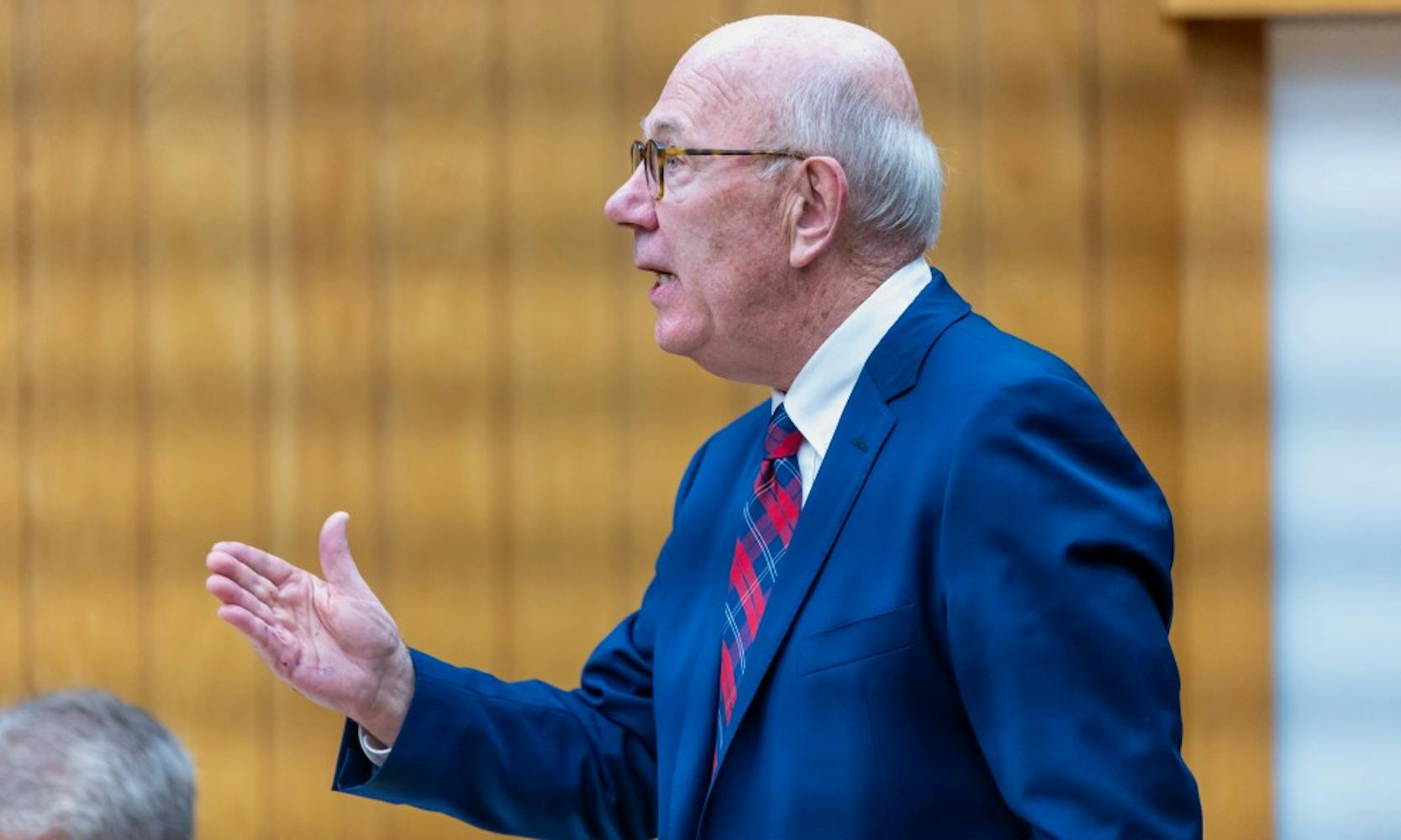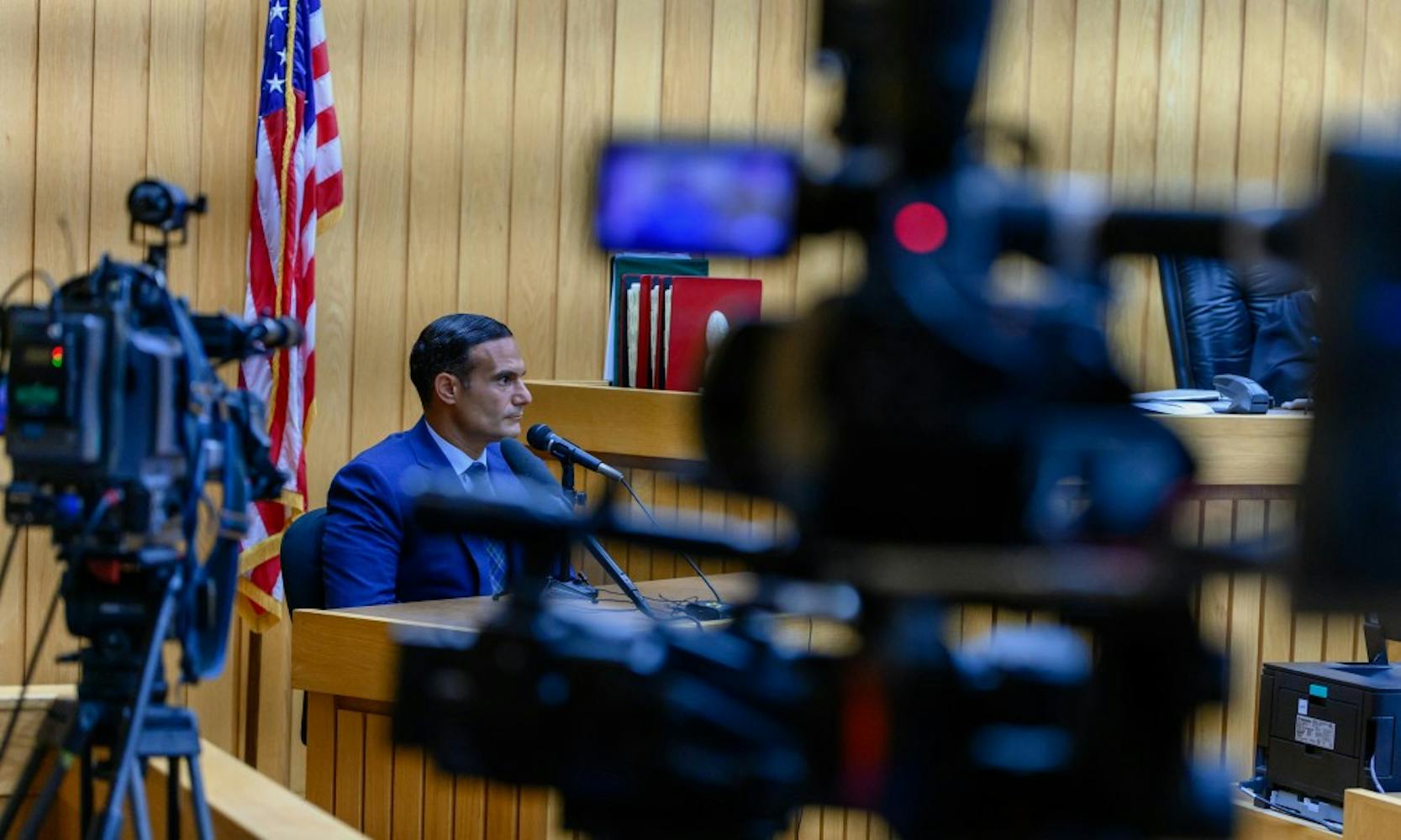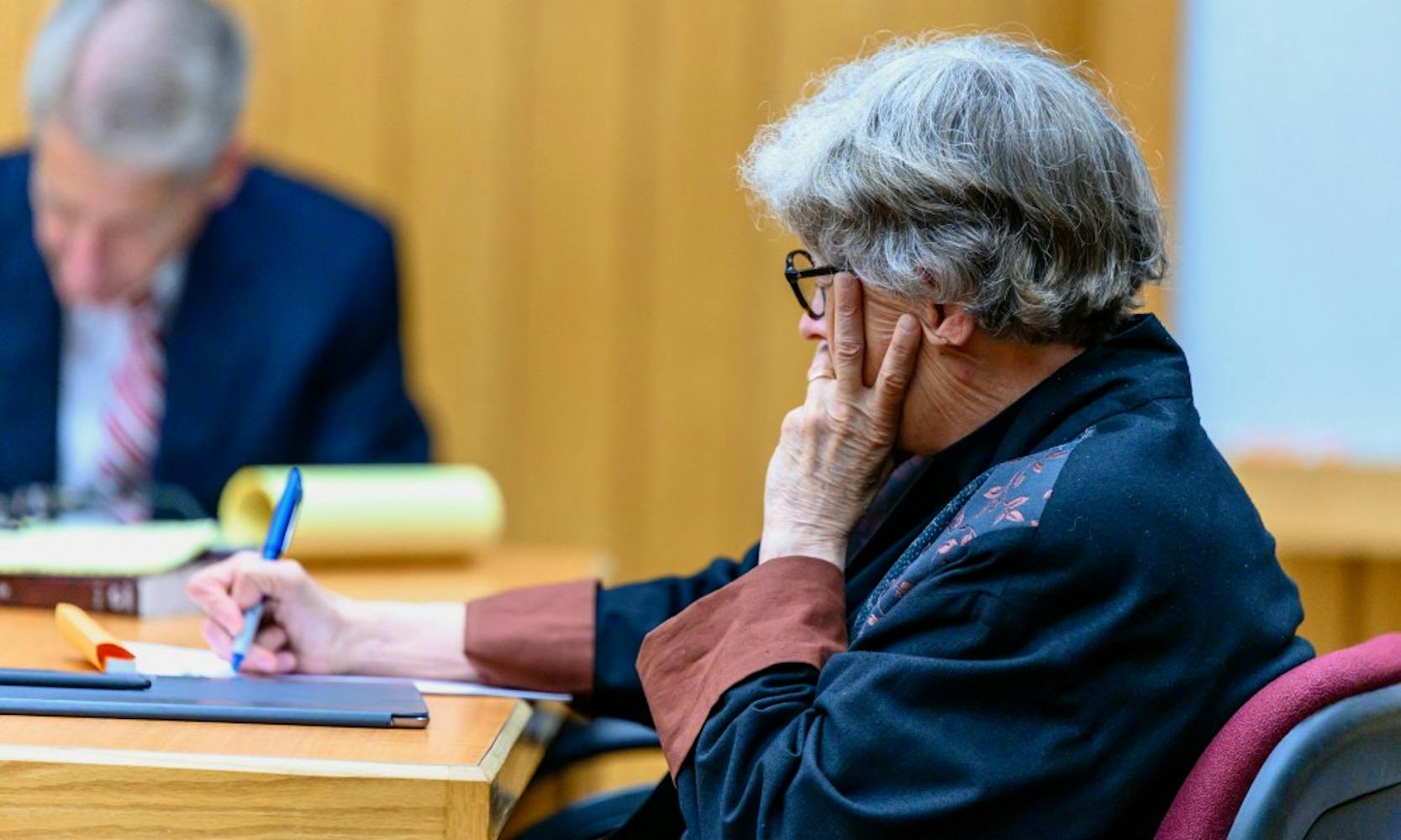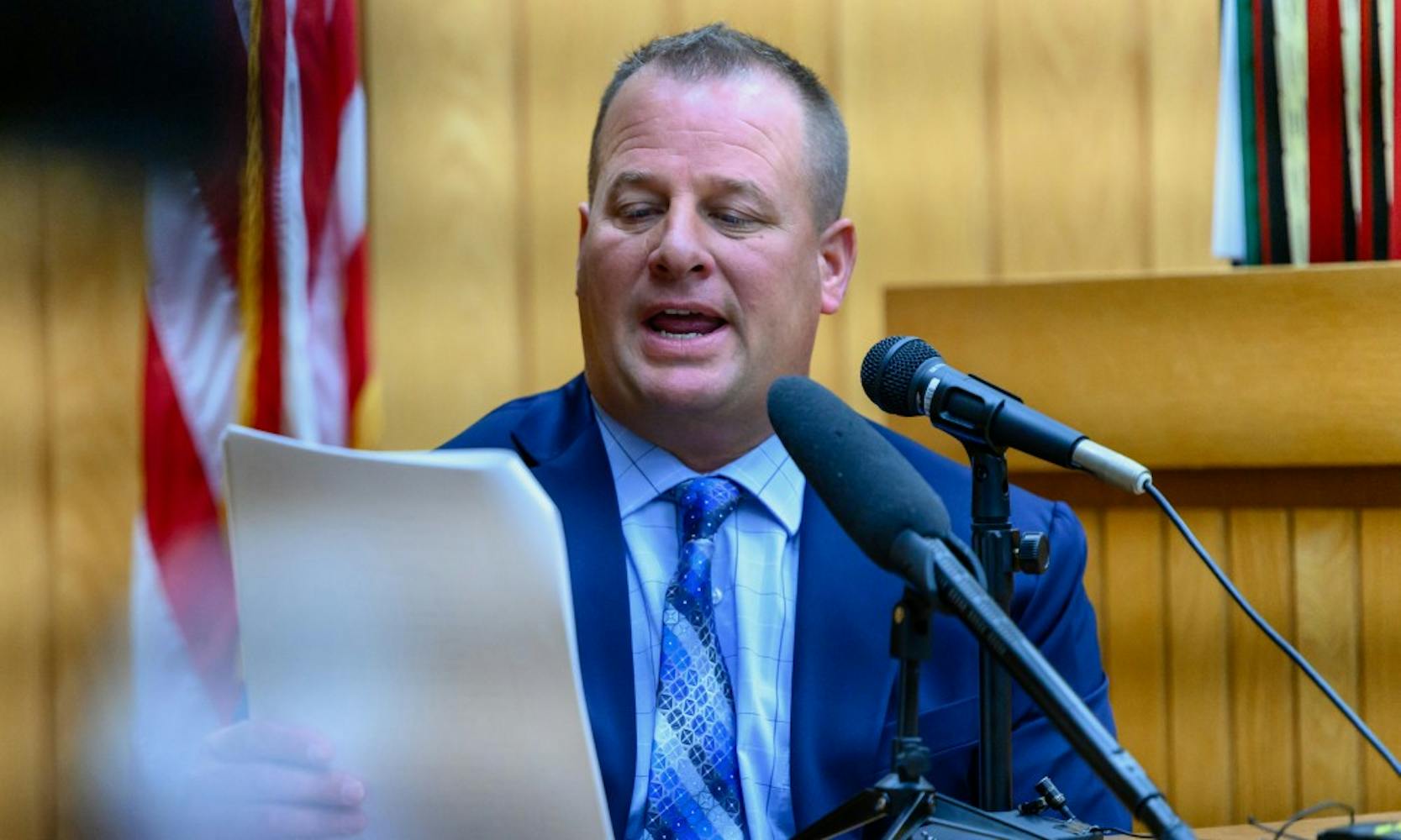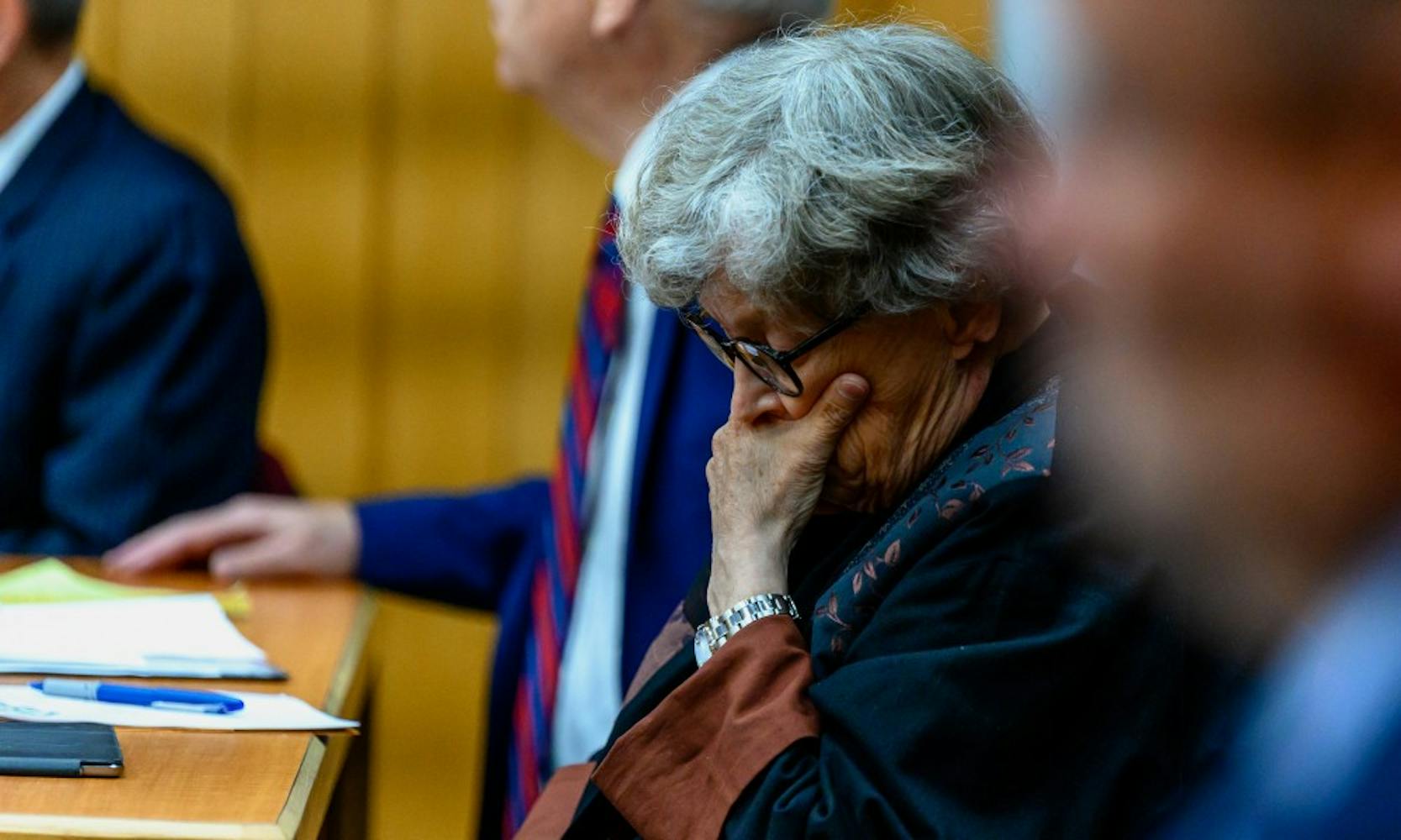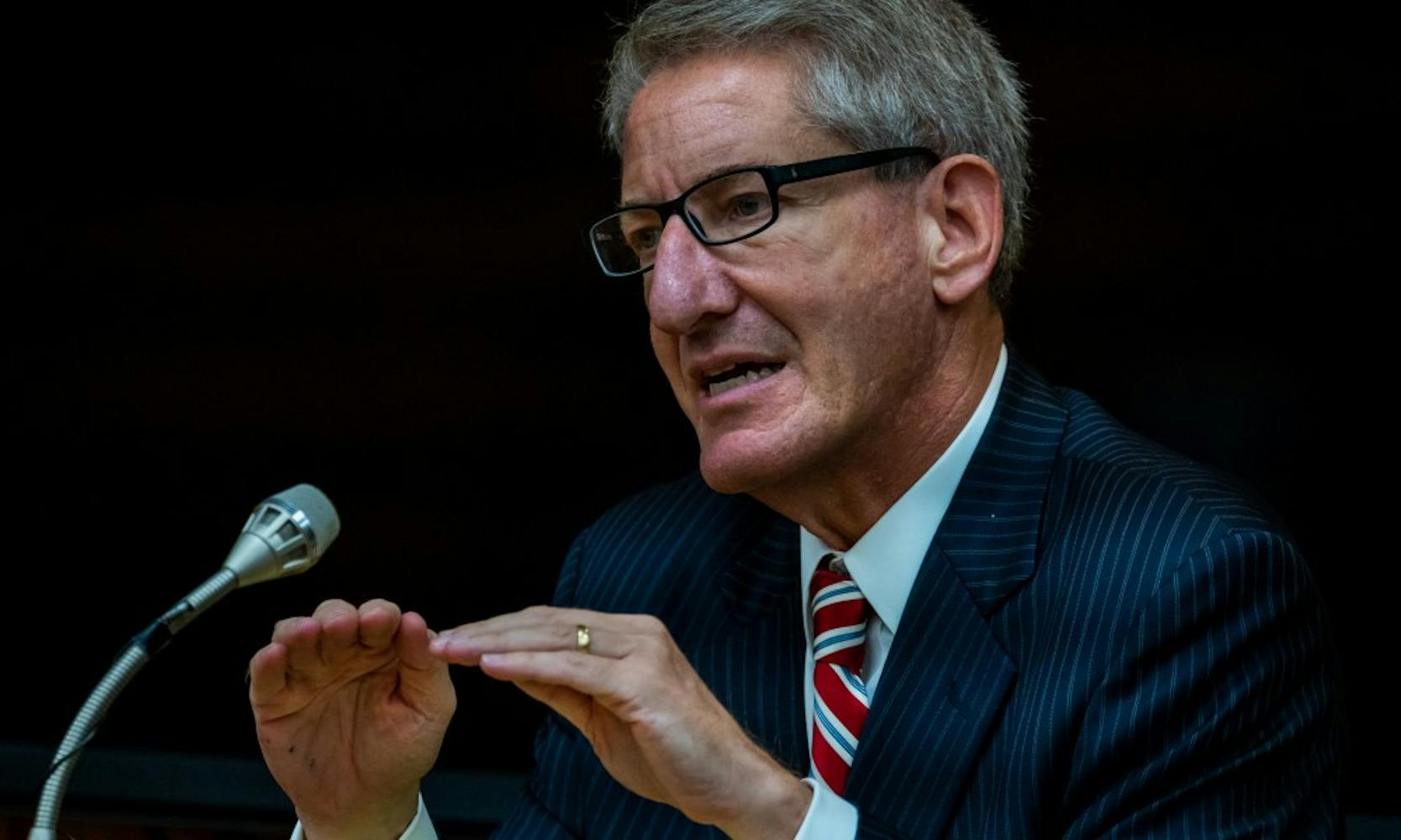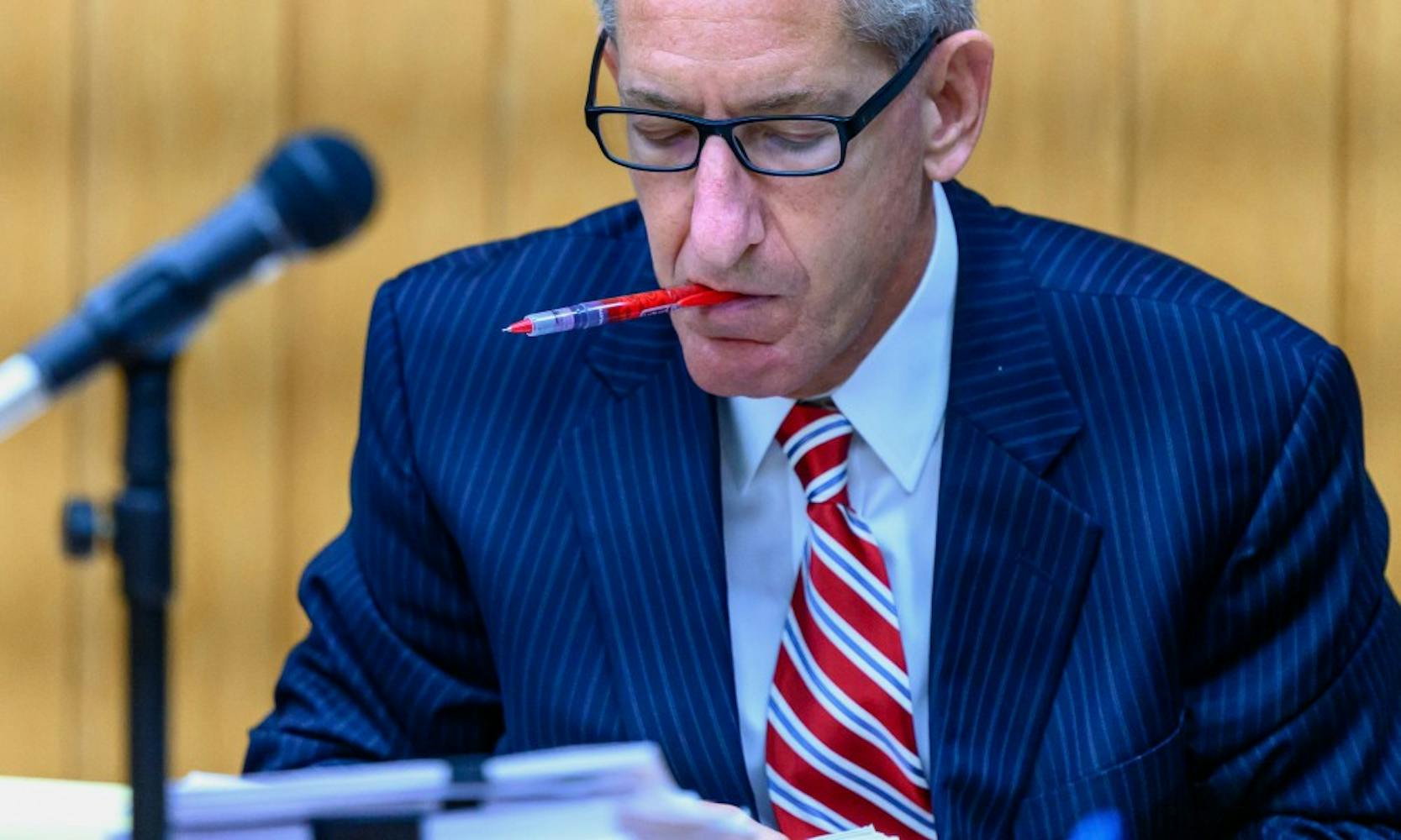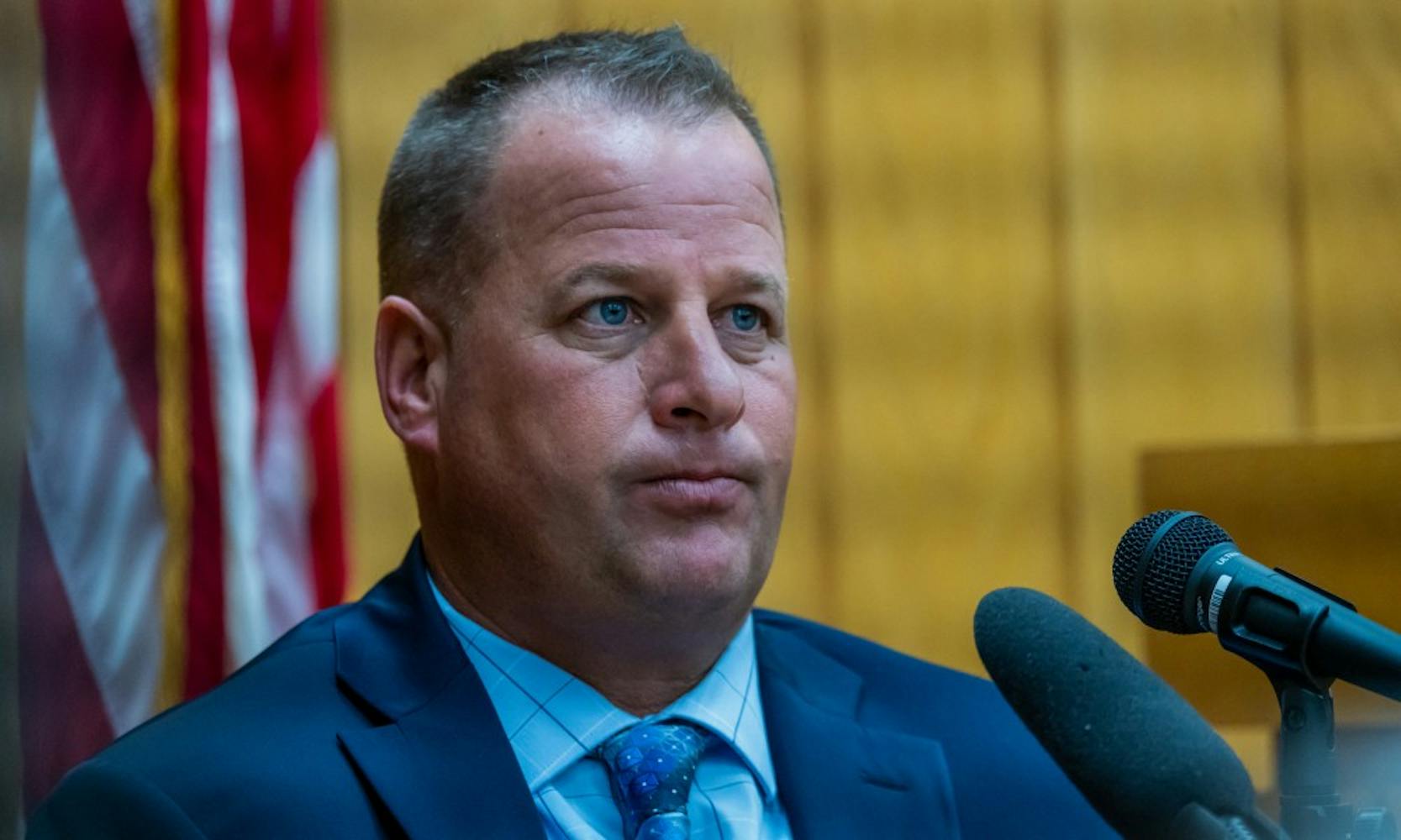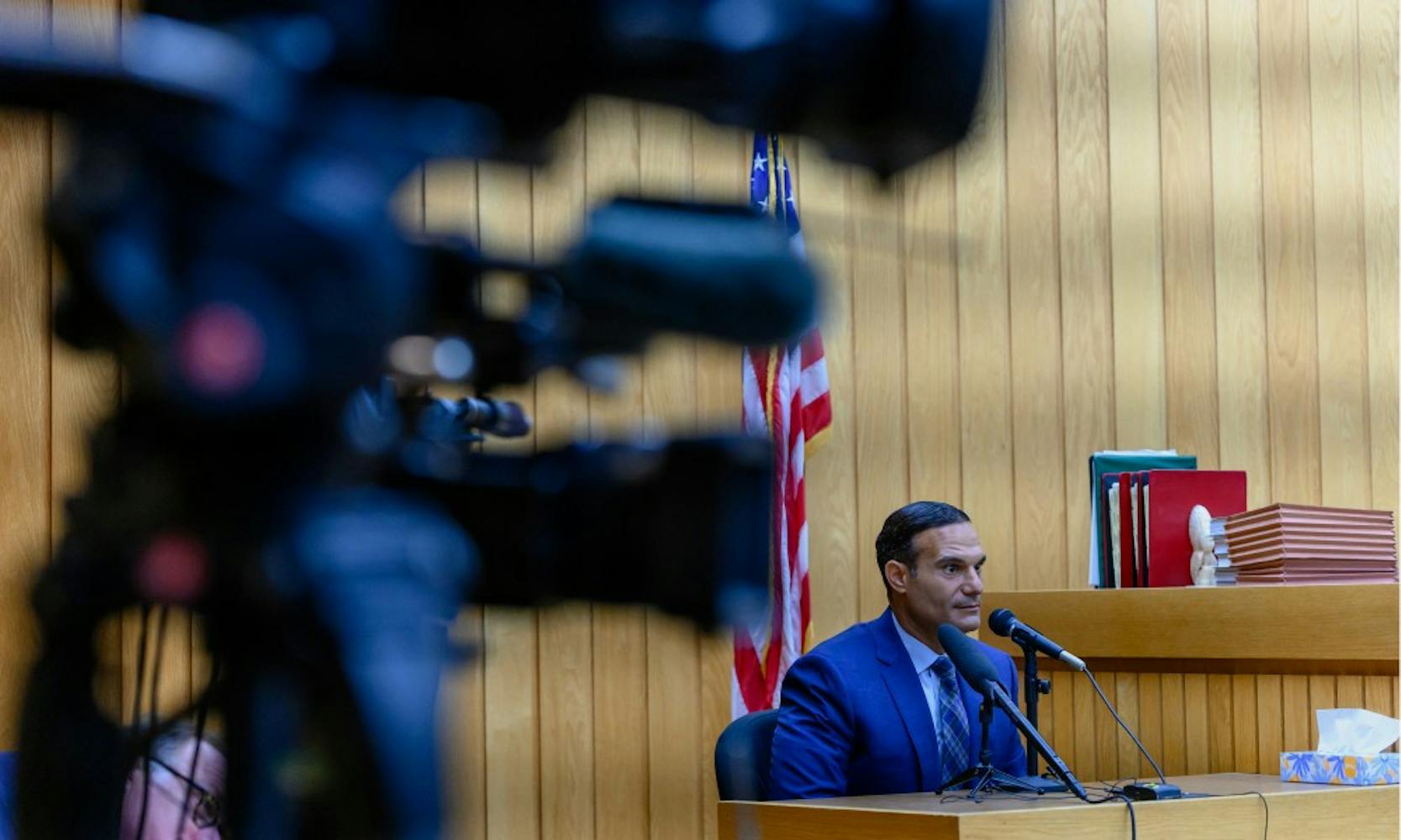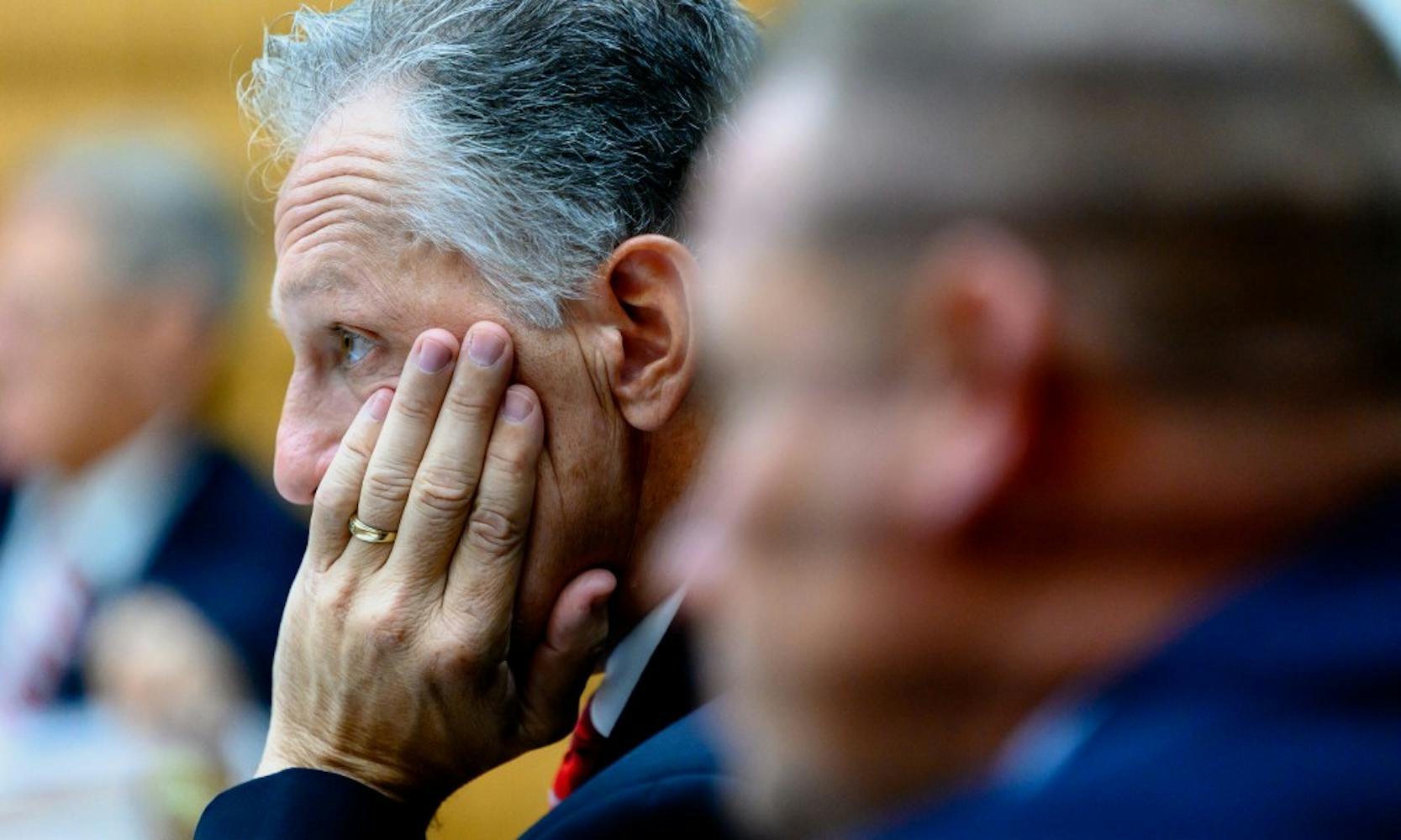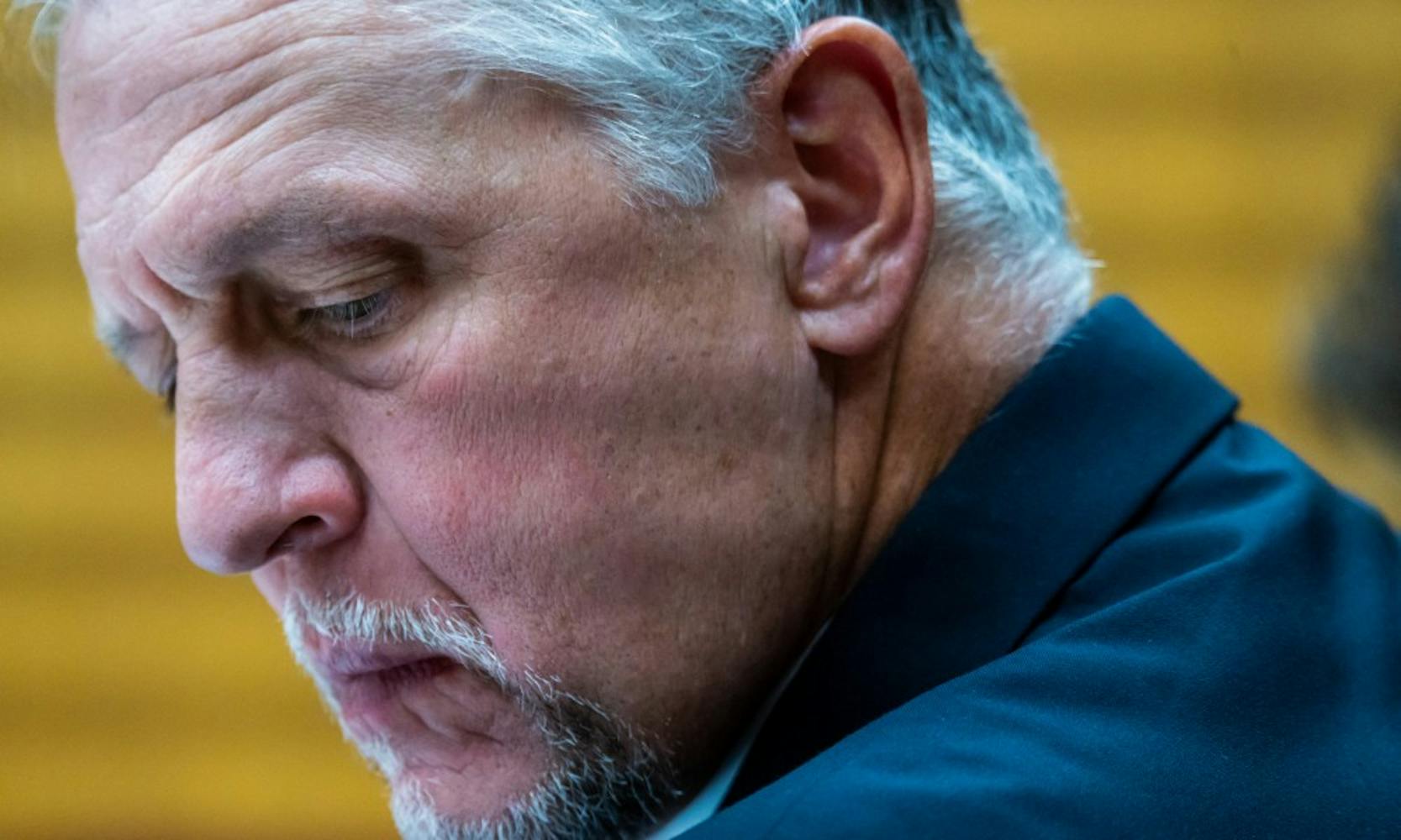Simon is charged in Eaton County District Court with two counts of lying to a peace officer in a violent crime investigation — a four-year felony — and two counts of lying to a peace officer in a four year or more crime investigation — a high-court misdemeanor with a maximum of two years. Each charge carries a potential $5,000 fine.
All four charges stem from statements made by Simon to Cavanaugh and Detective Sergeant William Arndt and relate to the 2014 Title IX investigation into former MSU athlete Amanda Thomashow’s complaint against Larry Nassar.
Simon's preliminary hearings began in February.
MSU Trustee Brian Mosallam weighs in
Brian Mosallam was first to testify before the Eaton County court Friday. He said he was unaware of Nassar’s abuse until IndyStar published a story about Nassar's abuse in September of 2016.
Mosallam was asked about the nature of Board of Trustees meetings and workshops. He said Simon would routinely attend those meetings.
He said updates on lawsuits and insurance business were periodic.
Assistant Attorney General Scott Teter said this was significant because it could prove liability to the university.
The defense raised three central arguments over the course of the day, seeking answers to these three questions:
Was Simon a suspect for a criminal investigation?
The court has heard plenty of testimony from Paulette Granberry Russell, former head of MSU's Title IX office and Simon's senior advisor.
Lee Silver — one of Simon's attorneys — introduced the complaint file for former dean of MSU's College of Osteopathic Medicine William Strampel, who was recently found guilty of misconduct in office and willful neglect of duty related to Nassar’s abuse.
Silver pointed out the file’s incident number was identical to the number on Simon’s file, noting that Simon’s number refers to an obstruction of justice investigation which would not rise to the level of felony, unlike Strampel’s criminal sexual conduct investigation at the time.
Judge Julie Reincke said she seeks testimony for why the incident number encompassed both cases.
Teter sought to point out that incident numbers are assigned at the beginning and can fluctuate as investigators gather evidence.
Silver further pointed out that the file-class code was for obstruction of justice, which also does not rise to a felony.
Was Simon notified that she was being interviewed as a part of a criminal investigation?
Michigan law requires peace officers to notify suspects being interviewed that they are a part of a criminal investigation.
Support student media!
Please consider donating to The State News and help fund the future of journalism.
Interview records inserted into the record by the defense don’t provide evidence of Simon being asked. They also don’t provide that evidence for other witnesses, including Russell, then-MSU Title IX investigator Kristine Moore and Provost June Youatt.
Cavanaugh said he and Arndt would give this notification during introductions before interviews almost all of the time.
The significance of this argument is that it would discredit the Michigan State Police investigation into Simon.
Cavanaugh said he remembers clearly telling Simon that she and her attorneys could discuss answers behind closed doors, and remembered warning Simon explicitly, more so than other witnesses.
Did Simon know Nassar’s name before 2016?
Simon’s statement to police is that she was aware of a sports medicine doctor who was under review, and she was unaware of "the substance of the review" and "the nature of the complaint,” which created tension among attorneys during Friday’s hearing.
Reincke thought Silver’s line of questioning as to why Cavanaugh thought Simon's statements were misleading was attempting to get inside Simon’s head, which was unhelpful.
Russell previously alleged writing Nassar’s last name along with “SA,” standing for sexual assault, on a folder and making it a point to mention it to Simon.
Teter also sought to discredit Russell's previous testimony — arguing that between the May 25 interview and another interview a month later Russell had reviewed all documents concerning Larry Nassar and did not give any information to police.
MSU Provost June Youatt, who held the same position in 2014, previously testified she was aware of a review of a doctor from the College of Osteopathic Medicine— where Nassar was a member of the faculty — in 2014 but did not know of his name.
So far, the judge has hinted at potential ‘probable cause’ for Simon’s alleged false statements.
Kristine Moore, then-MSU Title IX investigator, previously testified that in 2014 two individuals handled Title IX complaints. Currently, about 10 people handle that responsibility at the university.
Emails between Moore and Russell – the only two Title IX complaint handlers at the time – shows that three days before meeting with Simon, Russell and Moore both had all the details about Amanda Thomashow’s allegations against Nassar.
One line of evidence Silver introduced was an email of recommended questions by the Attorney General's office, which included a question about which staff member alerted Simon about the sports doctor she mentioned knowing was under review.
Cavanaugh agreed it was a miss on his part to not include that line of questioning.
Cavanaugh, who testified for much of the day, grew visibly irritated by some lines of defense questioning.
"When we sit down to talk about the Larry Nassar case, truthfully, I’m appalled that I have to ask direct questions of 'how is it that you became aware of the Larry Nassar case,'” he said. "They’re administrators at this university."
Discussion
Share and discuss “Defense builds its case: A recap of day 6 of Lou Anna K. Simon's preliminary exam” on social media.

